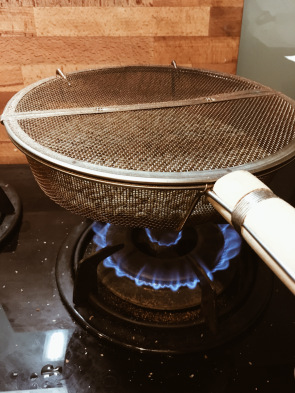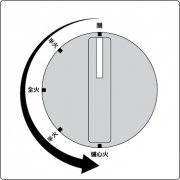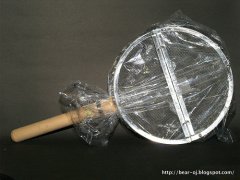Summary of hand net baking notes: how to shake the hand net? How to control the firepower?

For professional baristas, please follow the coffee workshop (Wechat official account cafe_style)
After more than half a year of continuous self-practice and the successive sacrifices of countless expensive farm beans, finally, after the recent continuous production of zero-failure and high-quality coffee beans, I think I can slowly come to a few more definitive conclusions. In fact, many of the key points have been clearly revealed in the book Coffee, but perhaps because the translation is not so verbose and easy to understand, coupled with the fact that I always like to misuse what I think is fierce, after stumbling around, this book is still the best.
I will still keep the previous baking teaching articles that are not so correct, because they record the various failed methods and processes I have tried, as well as conceptual evolution, and this may also be the method or idea you are trying. Hope that through these articles, we can help the friends who are interested in baking beans to avoid going the wrong way.
How to shake the hand net?
With regard to the method of shaking the hand net, some people say shake it left and right (including me) and others say go in circles (also me XD). However, from my final experience, Taguchi's "drawing an ellipse" is the most authentic. When throwing the hand net, because the fire of the household gas stove is only concentrated in the middle about 12 centimeters wide, if the whole process is swung from side to side, it is very easy to go beyond the range of the fire and cause the beans to be cold and hot, poor or uneven when being heated, and by drawing an ellipse on the fire, the beans can be heated all the way, and the beans can be stirred more evenly. Drawing an ellipse is also tantamount to a slight swing around + drawing a circle, which is indeed more in line with the actual situation.
How to control the firepower?
Firepower is the biggest key factor in the baking process. The changes in the five stages of baking beans: dewatering → to destroy fire, absorbing heat impulse → to release pressure, and cooling → to re-absorb heat → second explosion micro-adjustment, all need to rely on fire adjustment to control, especially the second step "fire" stage, it is the only time to give him a big fire and stir-fry. However, in such an ever-changing process of fire adjustment, we only use a single firepower, because there are too many details to be taken into account in the process of baking beans, in order to purify the operation flow, concentrate on controlling the fire, and the firepower is only adjusted at the very beginning, once fixed, don't itch to touch him before you drop the beans, unless the baking process finds that the firepower is really too big or too small. In order to unify the statement, I would like to use the following picture as an example:

The small hand net (like the baking worker) I will give him the gas knob roughly between "off" and "half fire", that is, all the holes look like fire and a little more height, while the larger hand net is about the position of half fire. The gas stove in everyone's home may be different, but the important principle is that the flame should not be too hot, so as not to overshoot the heat and explode at the same time. When you find it strange, there will already be thick smoke.
After setting the firepower, do not easily change him, and the fire can be controlled entirely by "distance". The following heat adjustment of the baking process is based on the "baking staff" hand network loaded with 90g raw beans as a model for your reference. A larger capacity of hand web baking needs further experiments before it can be shared with you.
Dehydration stage (zero-five and a half minutes). Smell: the smell of grass turns to light toast)
The hand net is about fifteen to twenty centimeters from the level of the gas stove and lasts about five and a half to six minutes. When the beans look consistent, it's about time.
Absorb the heat impulse (five and a half-seven minutes, or about two minutes). Smell: the smell of toast turns to a stronger burnt sweetness)
When the hand net is lowered to within 10 to 15 centimeters, the heat impulse begins to be absorbed, and the color change begins to change quickly.
The stage of explosion and fire drop (seven minutes to nine and a half minutes, or about two and a half minutes). Smell: continuous scorching sweet, but will slowly fade later)
Maintain altitude. Immediately press the timer to divide the time, and it will begin to explode intensively about half a minute after the first sound. At this stage, there will be a pleasant burst for about one and a half minutes, and it will become more and more sporadic and sparse two minutes after the initial sound. At this time, you can slowly increase the height of the hand net to about 15-20 cm in the dehydration stage.
PS: if you want to bake shallowly roasted beans such as Yega Chuefei with strong floral aroma and bright sour smell, you need to listen carefully towards the end of the explosion. My habit is to look at the time as soon as I hear "almost the last sound" of the last paragraph of an explosion. If there is no new sound, it will be the last sound, and if there is still a sound within 10 seconds, it will be recalculated. The calculation code table adds about 30 to 50 seconds at most to turn off the fire and drop the beans.
Second burst micro-adjustment (9.5-11 points), if you want to deep bake, it will take a little longer. Smell: more intense burnt sweetness)
There will be a quiet period between the end of the first explosion and the initial sound of the second explosion (endothermic period again). Listen carefully to see if there is a low, stuffy "split" sound. The timing is about one minute after the silence. Pay special attention to it at this time. (if the sound is still "clap", it may be the end of a single explosion, just ignore it.) if you hear an obvious but not very loud "split" sound, you can immediately turn off the beans (Touch second explosion, baking degree: Full City) if you still don't smell the aroma after more than a minute, try lowering the net to 10 to 15 centimeters to destroy the fire.
Can you bake beans on rainy days?
I once saw a hand-net bean baker write the slogan "Don't bake beans on rainy days" on the website, so he thought subjectively, "you can't bake beans on rainy days, so you should bake them quickly before it rains!" Even neurotic people begin to pay attention to the atmospheric pressure and humidity ratio at every moment of the day, and download iPhone App in the phone. Before you want to bake beans, you have to make sure that the humidity is too high and the air pressure is too high. Wait. But after several episodes of baking addiction and I had to bake beans in high humidity and even rainy days, I began to have reservations about this statement, but I was still not sure whether I could bake beans on rainy days. However, at least so far, baked beans can still produce batches of good quality on days of high humidity or even rain, but sometimes they do feel that the explosion is not so straightforward and refreshing, so I don't know if it really has a great impact. However, it is certain that baking beans on rainy days or when the humidity is high, on the one hand, the dehydration stage may have to be done more firmly, and on the other hand, after baking, raising beans, and putting them into the bag, the drying must be done well, so as not to be contaminated with too much moisture, which may cause the beans to get wet, smelly, or get wet early.
The above are the most recent baked notes ^
Important Notice :
前街咖啡 FrontStreet Coffee has moved to new addredd:
FrontStreet Coffee Address: 315,Donghua East Road,GuangZhou
Tel:020 38364473
- Prev

Notes and practical experience of roasting Coffee on Mobile net Books recommended
Professional barista communication Please follow the coffee workshop (Wechat official account cafe_style) recently, after adjusting its baking method for a period of time, it has gradually gained some valuable insights. Here are some notes. Among the coffee-related books sold on the market, the books I have bought and mentioned about roasting on mobile networks are Coffee Daquan (guarded by Taguchi) and Coffee appreciation (Su).
- Next

Japanese coffee hand net baking open-box coffee roasting hand net roasting coffee beans essential utensils
Professional baristas please follow the coffee workshop (Wechat official account cafe_style) We habitually call this tool hand net, which doesn't feel like a Chinese vocabulary. In Japan, this tool was originally used to bake ginkgo biloba, but I don't know which coffee lover had an idea. In a twinkling of an eye, it has also become a tool for coffee roasting. It's not difficult to bake coffee, as long as you can use fire.
Related
- Beginners will see the "Coffee pull flower" guide!
- What is the difference between ice blog purified milk and ordinary milk coffee?
- Why is the Philippines the largest producer of crops in Liberia?
- For coffee extraction, should the fine powder be retained?
- How does extracted espresso fill pressed powder? How much strength does it take to press the powder?
- How to make jasmine cold extract coffee? Is the jasmine + latte good?
- Will this little toy really make the coffee taste better? How does Lily Drip affect coffee extraction?
- Will the action of slapping the filter cup also affect coffee extraction?
- What's the difference between powder-to-water ratio and powder-to-liquid ratio?
- What is the Ethiopian local species? What does it have to do with Heirloom native species?

